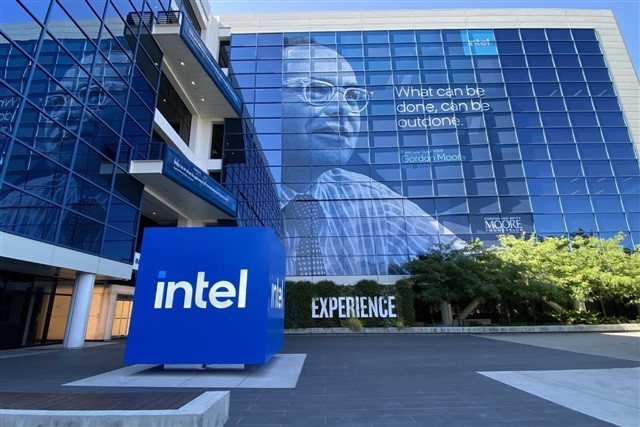Intel Corporation, once a dominant force in the semiconductor industry, is experiencing a steady decline in its market share, losing ground to competitors who have outpaced it in innovation and production capabilities. Over the past five years, Intel’s stock price has dropped more than 60% as it faces challenges in the data center and personal computer segments, with many investors now questioning the company’s path forward.
During its peak, Intel’s cutting-edge processors and “Intel Inside” branding solidified its presence in personal computing and cemented its position as an industry leader. The company revolutionized chip design and manufacturing, becoming synonymous with computing power and reliability. However, Intel’s competitive edge began to diminish as it struggled to transition to advanced manufacturing processes. A delay in moving from 14nm to 10nm designs allowed rivals such as Taiwan Semiconductor Manufacturing Company (TSMC) to make significant advances, quickly mastering 7nm and 5nm production. These setbacks have positioned TSMC as a leading chip manufacturer, particularly as they cater to high-demand tech clients like Apple and NVIDIA.
The rise of AI and machine learning in recent years has intensified competition in the semiconductor market. NVIDIA, with its GPUs optimized for AI applications, now commands a substantial share of the AI chip market, while Intel has lagged in adapting its technology to meet this new demand. Despite these challenges, Intel CEO Pat Gelsinger, who took on the role in 2021, remains focused on a turnaround strategy. He has implemented cost-cutting measures, such as job cuts and suspended dividends, and pursued high-profile partnerships, including a new deal with Amazon to manufacture chips on Intel’s forthcoming 18A technology. However, setbacks continue to weigh heavily on Intel’s bottom line, with the foundry division expected to report losses as it invests in expanding facilities.
Gelsinger’s efforts aim to reposition Intel at the forefront of semiconductor technology, with advanced chip designs and plans to open production to external customers. However, as Intel’s market value slips below $100 billion and margins continue to shrink, investors remain cautious, awaiting concrete progress from the tech giant’s ambitious recovery plan.




